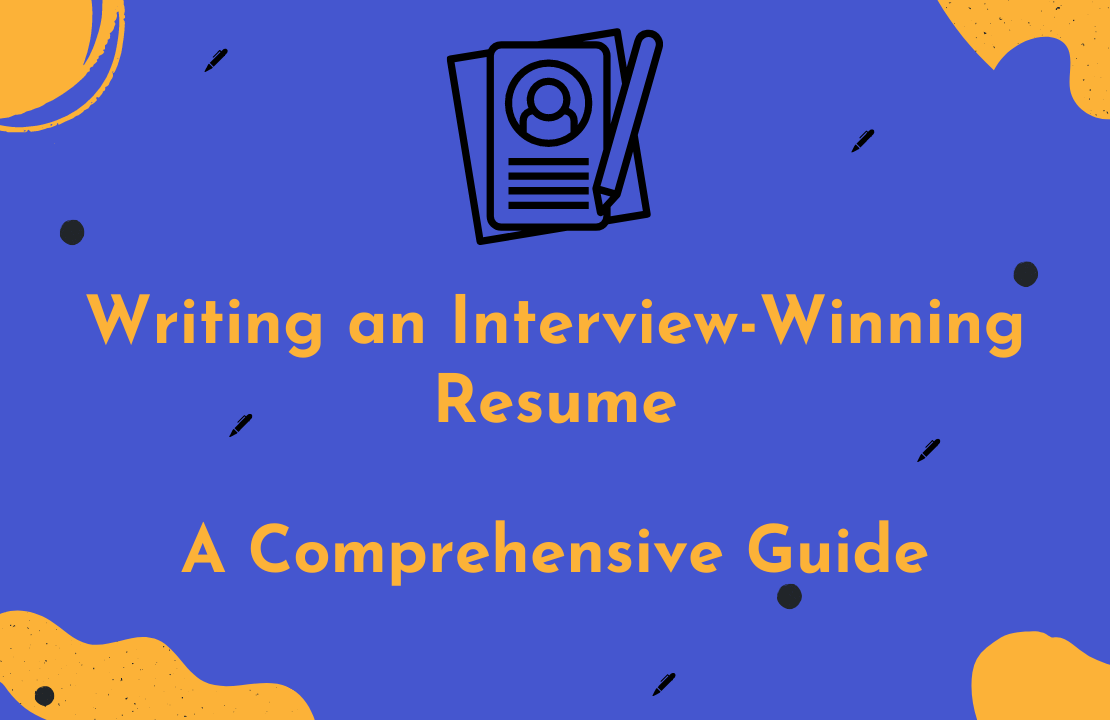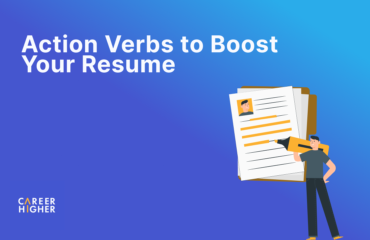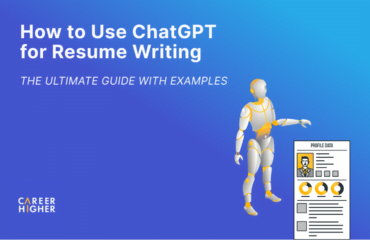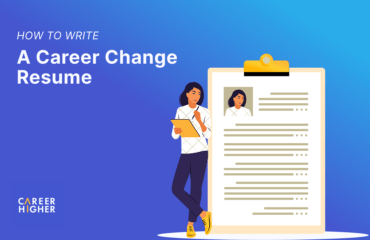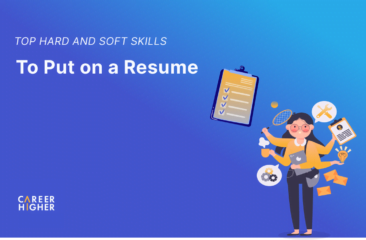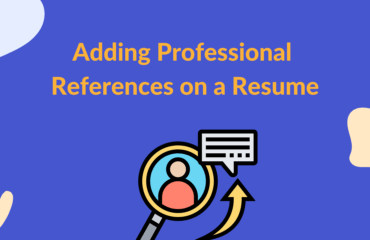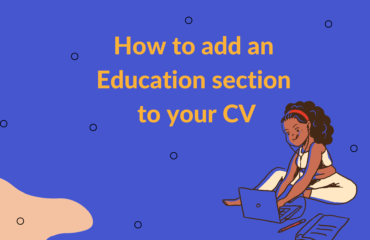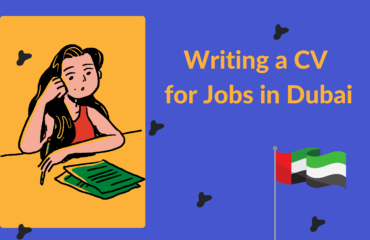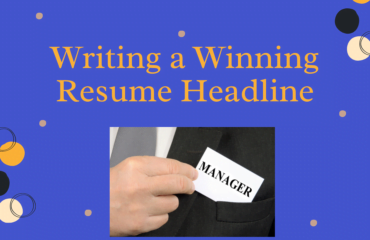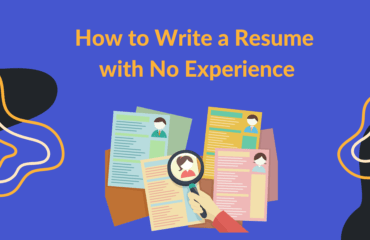Table of Contents
Applying for a job and securing an offer is a tedious and time-consuming process. According to the U.S. Bureau of Labor Statistics, it may take an average of six months to find a new job. With an average of 250 applicants for every corporate vacancy, standing out from the competition is not a walk in the park. The digitization of the recruitment process has made it even trickier for most candidates. With the introduction and continuous development of Applicant Tracking Systems (ATS), striking a balance between writing for software and human readers is a must.
Despite the profound changes in the job search and recruitment process, the best way to land your dream job hasn’t changed. Applying best practices to resume writing remains the key to attracting your prospective employer’s attention and earning an interview. In this article, we will share some of the resume writing tips and best practices to help you maximize your chances of outshining the competition.
Why do you need a good resume?
A resume is a marketing document that allows you to promote your qualifications to your target employer. It is generally required to progress in the recruitment process and provides decision-makers with relevant data to make informed hiring decisions. Thus, how you structure and what information you decide to include play an essential role in your application’s outcome. Here are some reasons why you should put good resume writing into the heart.
- It introduces you to your target employer by highlighting your background, skills, and expertise.
- It provides an eye-catching brief of your career.
- It demonstrates your competence and how you’re a match for the job.
- It can lead you to an interview and ultimately land your dream job.
When is the best time to write a resume?
The primary function of a resume is generally to secure an interview and land a job. For this reason, many professionals don’t work on their resumes until they actually need one. While this may seem logical, there is no such thing as a permanent job. This means you won’t know when you might actually need a resume. For instance, many professionals have unexpectedly found themselves out of work due to the pandemic’s impact on businesses. So, better ready than sorry, right?
The best time to write your resume is as soon as possible. Don’t wait until you actually need one. But this doesn’t mean you should have a perfectly marketable document ready to go all the time. We recommend keeping notes of your job history and accomplishments. Then, write or update your resume when you decide you are open to other opportunities. As the saying goes, “To be prepared is half the victory.”
Tips and tricks for writing a good resume?
Not all resumes are created equal. A good one tells prospective employers that you have what it takes to do the job. In addition, it allows you to stand out from the rest of the applicants, putting you in a better position to win an interview. Here’s a list of elements that comprise an interview-winning resume.
a) Personal Branding
The concept of branding used to be reserved for businesses. But with the emergence of social media, branding has evolved from merely being known for corporate use to gaining significance among individuals like candidates. In fact, personal branding has come a long way since it was first introduced by Napoleon Hill in his book Think and Grow Rich. It has become fundamental in enabling job seekers to differentiate themselves from the competition.
Personal branding refers to how you promote yourself. It is the unique combination of your skills, experiences, and accomplishments that you want your target employer to see about you. In essence, it is how you communicate your unique selling proposition to motivate your target employers to want to learn more about you. In addition, incorporating your personal brand maximizes your probability of finding work that resonates with your personality and abilities. Here are some questions you can ask yourself when creating your branding statement.
- What are the things that you are good at and love doing?
- What are the two to three adjectives that best describe your most noteworthy personality traits?
- What are your most notable and relevant accomplishments?
- What problem can you solve for your target company?
b) Professional Storytelling
When you apply for a job, you only have a few seconds to make a lasting impression. One of the most effective ways to do this is by incorporating professional storytelling into your resume. Combining data and story to present your qualifications provides decision-makers with a fuller picture of your competencies, making your application more memorable to decision-makers. In fact, a study revealed that messages delivered as stories are 22 times more likely to be memorable. Let’s take a look at some of the ways how you can use storytelling in your resume.
- Take the time to know your target employer’s needs. What are their most pressing challenges and concerns? Keep these in mind as you write your resume.
- Utilize a storytelling format to create your professional summary. This should read like a narrative. So, write your summary in paragraph form instead of bullet points.
- Incorporate the important elements of a good story. One of the effective ways to do this is by using the STAR (Situation, Tasks, Action, and Result) format to contextualize your responsibilities and accomplishments.
- Complement the narrative in your resume with your cover letter and LinkedIn profile.
c) Language and Tone
A good resume goes beyond having well-written content. As they say, “It’s not what you say, it’s how you say it”. The same goes for resume writing. Like tone intonation and body language, the words on your resume can reveal dramatic changes in conveying your message. So, using those words wisely is crucial in making or breaking your chance of impressing the recruiters. Here are some important tips to remember.
- Write in first-person fragments.
- Use formal and professional English, ensuring alignment with your target location.
- Match your target industry’s language and tone.
- Use an active voice to keep your narrative concise and sharp.
- Lead with strong verbs to provide the reader with a clear understanding of what you’ve done to accomplish your tasks and achieve the desired results.
d) Keywords
Keywords are words or phrases that generally describe job requirements. These may include skills, education, experience, and certifications that ATS and decision-makers look for in a candidate. Relevant keywords can be added throughout different sections of your resume, such as professional summary, key skills, work experience, or education based on where they suit best.
99% of Fortune 500 companies and a growing number of small and mid-sized businesses use ATS to search for specific skills and keywords that are most relevant to the job description. So, strategically including relevant keywords in your resume increases your chances of being found during the pre-screening process. Additionally, these make your application more appealing and relatable to decision-makers. If you’re wondering how to identify the right keywords, here are some tips.
- Analyze the job descriptions, focusing on the duties, responsibilities, and requirements sections.
- Take note of keyword patterns, including soft skills, hard skills, job title, education, and professional certifications.
- Use resume optimization tools like Jobscan, SkillSyncer, and RezRunner to identify the most important keywords you should add to your resume.
e) Quantitative Achievements
Adding facts and figures to your resume effectively communicates your value and highlights your accomplishments in your previous jobs. It creates a good first impression and makes your application more memorable to decision-makers. Rather than using vague terms, include specific quantitative achievements to describe your results. Numbers make your claims more credible, increasing your probability of landing an interview. Use the following questions as a guide to identifying your accomplishments at work.
- Did you identify and solve a problem? What have you accomplished?
- Did you introduce a new system or procedure that made work easier or more accurate?
- Did you save the company money or time?
- Did your efforts increase the company’s profit line?
- Did you increase productivity or reduce downtime?
Like what we mentioned above, the STAR format is an effective way to narrate your duties and accomplishments. This provides decision-makers with a clearer picture of your competencies and how you’ve previously put them into practice. Let’s take a look at the example below.
“Developed and delivered training courses to over 100 companies (situation/task); demonstrated optimum ways for leveraging the product to meet the firm’s needs and create a new revenue stream (action); boosted company income from production activities by 20% (result)”
How to Create an Interview-Winning Resume?
For some professionals, writing a good resume is easier said than done. This is especially true if writing is not your cup of tea. If you find resume writing tricky, keep on reading. This section will discuss resume writing tips to help you create an interview-winning document.
a) Design and Format
When you submit your resume through online job platforms, it will go through the ATS prescreening process. ATS will convert your document into a searchable text version. To ensure that your application will be read and processed correctly, we highly recommend sticking with best practices, minimalist, and polished format, layout, and structure. When it comes to resume format and design, less is more. This approach maximizes accessibility and readability for both ATS and human decision-makers. Here are some of the things you should keep in mind.
- Align your template design with the culture of the industry you are targeting. Traditional industries prefer a conservative look, while neutral industries are more flexible. If you’re eyeing progressive industries, creative templates with discreet use of colors and fonts would be an advantage.
- Select a font size and style that makes the content easy to read for both automated and manual screening. Some of the good choices are Arial, Times New Roman, Helvetica, Calibri, and Cambria. When it comes to font size, using 9, 10, or 11 is highly recommended.
- Make strategic use of line spacing. You may use single, double, or custom spacing based on your resume’s content and length. Remember that your document should be cohesive and scannable.
- Go for a one to two-page long resume, depending on your target country and length of experience. As a rule of thumb, make the content as concise as possible while still conveying your worth. Maintain a balance between including all the relevant information and being succinct.
b) Resume Sections
A well-organized resume that is structured into clear categories makes it easy for busy recruiters to see your qualifications. It can capture a recruiter’s attention and help you land an interview. How you structure your resume should depend on your target job and where you are in your career. While every resume is different, here’s a list of key sections you should consider including.
i) Contact Information
Your contact information is the first essential section of your resume. It should appear at the top of the first page, just slightly below your name. Include your phone number, home address, email address, LinkedIn profile, and link to your portfolio’s website (if any). Proofread the details to ensure they are accurate and up to date. Here’s an example.

Contact Information
ii) Professional Summary
The professional summary is placed at the top of the resume immediately following your contact details. It comprises a five to six-line summary, highlighting your experience, expertise, and key skills. Additionally, consider adding the exact job title you are targeting. This helps ensure you’ll be found when a recruiter searches by a job title during the pre-screening process. Let’s take a look at how it’s done in practice.
“Driven, innovative, and results-oriented Senior Product Manager with over 10 years of experience leading the end-to-end development of B2C fintech products. Have a proven track record of success in improving product performance based on customer feedback, expanding product market reach, and maximizing ROI. A hands-on leader is strongly commended for the ability to make high-quality decisions quickly and motivate a team. Seeking challenging Senior Fintech Product Manager role in a startup fintech company.”
iii) Key Skills
The key skills section contains the core competencies required for the job. We suggest listing 9 to 12 of your strongest, most relevant soft and hard skills. If you are applying for a job that requires very specific technical skills, you may opt to add a technical skills section. You may refer to the examples below.

Key Skills Example

Technical Skills Section
iv) Work Experience
Work experience makes up a significant portion of your resume, making it the most vital of all resume sections. Decision-makers tend to focus on this section as it is expected to include the most important details of your background. Work experiences typically comprise the following.
- Paid professional jobs you’ve done in recent years
- Additional work experiences that were held too long ago or not related to your target job
- Relevant voluntary work
When detailing your work experience, maintain focus on relevant information. Professionals with less than ten years of experience should focus on the first five years of their careers. On the other hand, if you have ten or more years of experience, we suggest detailing the first ten years of your work history. Older roles can be summarized at a high level under the Additional Experience section. Below are some of the things you should keep in mind when listing your work experience.
- Provide key information about the employer, such as company name, location, and a brief description of what they do.
- Utilize a concise and straightforward job title.
- Use the format MM / YY, MM / YYYY, or Month YYYY when listing employment dates, as these are known to work best for both ATS and human decision-makers.
- Focus on your three to five most relevant duties and accomplishments.
- If you have limited experience or a long employment gap, consider adding voluntary work if relevant.
Here are some examples of how to do the above in practice.

Professional experience

Additional experience

Voluntary experience
v) Education
The Education section should include the institution’s name, degree, and years attended. You may also list completed certifications if relevant to your target job. For entry-level professionals, they can provide additional information, such as relevant coursework, societies, organizations, and extracurricular activities. Doing so can help strengthen their candidacy despite their limited work experience.
When listing your educational background, pay attention to how the required degree is listed in the job description. If the job post indicates that the company requires someone with a Bachelor of Science in Computer Engineering, you need to write it as is. This ensures ATS will recognize your credential as an exact match to what the position requires.
vi) Professional Certifications
The professional certifications section is optional and should only be added if relevant. Like your educational background, this section should include the certification name, name of the issuing organization, and date of completion. This section is commonly placed at the bottom part of the resume depending on its relevance to your target job.
vii) Optional Sections
Apart from the standard resume sections, there are optional components you can add to help spice up your resume. These may include languages, volunteer experiences, awards, publications, and organizations. While these sections are not required, they can help paint a fuller picture of who you are and what value you can offer to the company if hired.
When deciding when and which sections to include, consider the role for which you are applying. Take the time to review the job requirements to identify which sections will help you provide the most comprehensive information regarding your skillset. As a rule of thumb, the optional sections should only be added if relevant.
A good resume can transform your personal brand like a great marketing campaign can captivate customers’ interest and boost sales. While there is no sure-fire formula for a guaranteed interview, the resume writing tips outlined in this article will help you maximize the probability of a positive outcome. If you still find resume writing a challenge, we will be happy to help.
References
2) CareerHigher, 2021. How to Use Storytelling in Your Resume to Get Hired. Available at: https://www.careerhigher.co/career-advice/how-to-use-storytelling-in-your-resume-to-get-hired-1449/
3) CareerHigher, 2021. How to Create a Best-Practice Resume. Available at: https://www.careerhigher.co/career-advice/how-to-create-a-best-practice-resume-1501/
4) CareerHigher, 2021. How to List Work Experience on a Resume. Available at: https://www.careerhigher.co/career-advice/listing-work-experience-on-a-resume-125183/
5) CareerHigher, 2021. Resume Language and Tone of Voice- Tips and Tricks. Available at: https://www.careerhigher.co/career-advice/writing-a-resume-using-the-right-language-and-tone-of-voice-123033/
6) CareerHigher, 2021. How to Create an ATS-Optimized Resume. Available at: https://www.careerhigher.co/career-advice/how-to-create-an-ats-optimized-resume-1534/
7) CareerHigher, 2021. Optimizing Soft Skills on Your Resume. Available at: https://www.careerhigher.co/career-advice/optimizing-soft-skills-on-resume-124261/
8) CareerHigher, 2021. Different Resume Templates by Industry. Available at: https://www.careerhigher.co/career-advice/different-resume-templates-by-industry-1764/
9) CareerHigher, 2021. How Long Should a Resume Be. Available at: https://www.careerhigher.co/career-advice/how-long-should-a-resume-be-1754/
10) CareerHigher, 2021. How to Write a Professional Summary for Your Resume: Available at: https://www.careerhigher.co/career-advice/how-to-write-a-professional-summary-for-your-resume-1435/
11) CareerHigher, 2021. How to Create a Professional Experience Section: Available at: https://www.careerhigher.co/career-advice/how-to-create-a-professional-experience-section-1555/
12) U.S. Bureau of Statistics, 2021. Economic News Release. Available at: https://www.bls.gov/news.release/empsit.t12.htm
13) Jobscan, 2019. 99% of Fortune 500 Companies use Applicant Tracking Systems. Available at: https://www.jobscan.co/blog/99-percent-fortune-500-ats/
14) Forbes, 2015. A Good Presentation Is About Data and Story. Available at: https://www.forbes.com/sites/kateharrison/2015/01/20/a-good-presentation-is-about-data-and-story/?sh=45411ac8450f
15) Glassdoor, 2015. 50 HR & Recruiting Stats That Make You Think. Available at: https://www.glassdoor.com/employers/blog/50-hr-recruiting-stats-make-think/#:~:text=On%20average%2C%20each%20corporate%20job,will%20be%20offered%20a%20job
